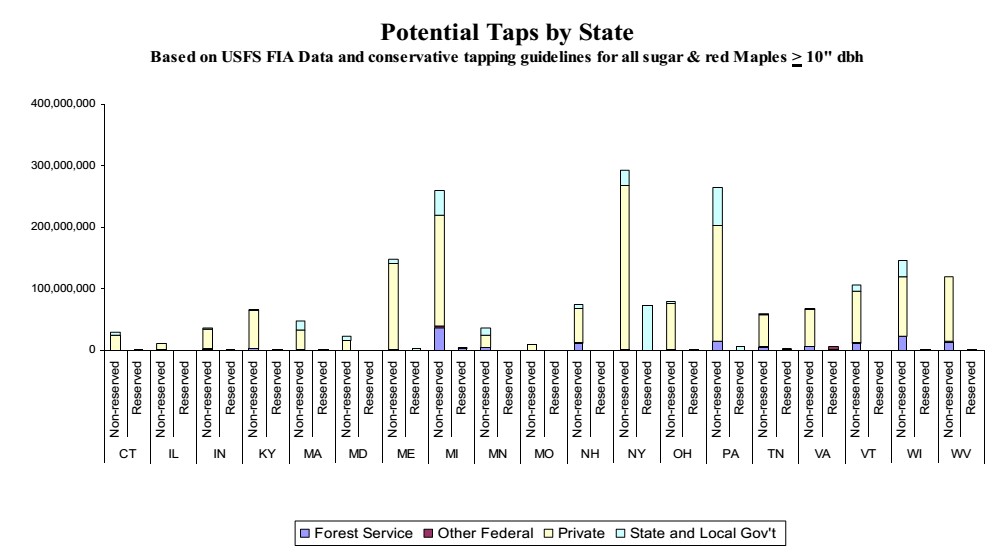By Matthew K. Pelkey
The Acer Access and Development Program, otherwise known as the Maple TAP Act, is a part of the federal 2014 Farm Bill enacted earlier this year which will provide USDA grants of up to $20 million per year over five years to maple producing states to encourage production and development of the maple industry. This is a competitive grant process between maple producing states.
The public policy justification behind this funding is that the United States is missing out on a large opportunity given the number of maple trees we have and the relatively low number of trees we are tapping. Canada, and more specifically Quebec, is capitalizing on 75% of worldwide production. The U.S. does not even break 20% of worldwide production.
The problem, and corresponding opportunity, is that Quebec utilizes 35% of available maple trees whereas the U.S., with 2 billion potential taps, only has a utilization rate of .38%. Given that we are currently importing 4 times as much maple syrup as we produce—there is a tremendous market opportunity presenting itself.
New York is particularly well suited to benefit from the Maple TAP Act given that we currently utilize about only 0.50% of maple trees and have the highest total potential taps of any maple producing state at approximately 300 million.

Source of data and graph: Cornell University paper, Background Information and Justification for Reintroducing the Maple Tapping Access Program Act as part of the new Federal Stimulus Package.
With an available 300 million taps, there is a tremendous market opportunity in New York State alone. Indeed, if New York even utilizes a third of its available maple taps, the resulting economic impact would be tens of millions of dollars to farmers and the upstate economy.
According to U.S. Senator Charles Schumer’s office, the sponsor of the Maple TAP Act, the potential economic impact to upstate New York breaks down as follows:
- In the North Country, the epicenter of New York’s maple industry, there are 70 million potential new taps, and the TAP Act could help bring in an additional $19 million in revenue per year.
- In the Capital Region, there are 34.8 million potential new taps, and the TAP Act could help bring in an additional $10 million in revenue per year.
- In the Western New York, there are 21.1 million potential new taps, and the TAP Act could help bring in an additional $6 million in revenue per year.
- In the Rochester-Finger Lakes Region, there are 11.6 million potential new taps, and the TAP Act could help bring in an additional $3 million in revenue per year.
- In the Southern Tier, there are 70.8 million potential new taps, and the TAP Act could help bring in an additional $22 million in revenue per year.
- In Central New York, there are 45.5 million potential new taps, and the TAP Act could help bring in an additional $13 million in revenue per year.
- In the Hudson Valley, there are 26.8 million potential new taps, and the TAP Act could help bring in an additional $8.7 million in revenue per year.
So where can this funding be used most effectively? Anecdotally, if you talk to current producers the biggest barrier to further production is access to land. Landowners, many of which are concerned that tapping their trees will compromise the quality of timber intended be subsequently harvested and sold, are hesitant to lease their properties to maple producers. New York State could, and quite frankly should, propose funding through the Maple TAP Act to encourage landowners to lease property to maple producers and increase access to these trees. Furthermore, focus should likewise be given to encouraging research, development and commercialization of new products from maple sap and syrup.
